As we approach the Holiday season, now is a great time to give yourself a new program, gadget, or tool that will take your small business to the next level in 2022. What better way to flex in the new year than with a business and life that runs a bit smoother!? This blog post will dive into the top gifts to give yourself as a small business owner.
6 Gifts to Consider Gifting Yourself + Business in 2022
1. Intuit Quickbooks Small Business
Quickbooks Small Business is an online accounting  tool that allows you to organize your finances and save time as a business owner. Quickbooks allows you to track time, manage your money, and send invoices. Not to mention, when tax season rolls around, everything will be organized and in one place. When you join, you can download the app straight to your phone, so you can check the status of invoices, pay employees, and input expenses in no time at all! Quickbooks Small Business starts as low as $12.50 a month.
tool that allows you to organize your finances and save time as a business owner. Quickbooks allows you to track time, manage your money, and send invoices. Not to mention, when tax season rolls around, everything will be organized and in one place. When you join, you can download the app straight to your phone, so you can check the status of invoices, pay employees, and input expenses in no time at all! Quickbooks Small Business starts as low as $12.50 a month.
2. The newest release of the phone, computer, or tablet you own
As we move deeper and deeper into the digital age, chances are you’re spending the majority of your time on  one, if not all, social platforms sharing about your business and maintaining your website. Whether a phone, computer, or tablet, an updated system allows you to run your business with a high-quality camera, the newest features, and the fastest speed.
one, if not all, social platforms sharing about your business and maintaining your website. Whether a phone, computer, or tablet, an updated system allows you to run your business with a high-quality camera, the newest features, and the fastest speed.
Note: As a member of the NFICA, you’ll have access to BenefitHub, a marketplace offering discounts and rewards on everyday purchases, including electronics!
3. Hire a professional to design your website
While there are many generic website templates that you can tweak to fit your brand’s needs, a custom website can take your business to a whole new level. Let’s face it unless you’re a web developer and designer, the  struggle to create a professionally designed website is real! Hiring a pro to design something one of a kind can take the customer experience to new heights and improve conversion rates. Not to mention, hiring a professional can boost your SEO resulting in more eyes on your business in 2022!
struggle to create a professionally designed website is real! Hiring a pro to design something one of a kind can take the customer experience to new heights and improve conversion rates. Not to mention, hiring a professional can boost your SEO resulting in more eyes on your business in 2022!
4. Join a Masterclass
Investing in a couple of hour-long masterclasses led by a leading guru in your niche is a great way to expand your knowledge, uplevel your expertise, and propel your services or products in 2022. Not only this but participating in a masterclass is a great way to connect with like-minded people and form meaningful connections with those in your niche community.
5. Buy a membership at your local infrared sauna studio
As a small business owner, freelancer, or direct seller,  the stress of the year could be weighing on your shoulders; what better way to cure it than to sweat it off! The current hype around infrared saunas is real! What’s there not to be hype about, though? Some reports suggest they help with sleep, relaxation, detoxification, relief from chronic fatigue, and more! What better gift to give yourself than the gift of health, wellness, and peace?
the stress of the year could be weighing on your shoulders; what better way to cure it than to sweat it off! The current hype around infrared saunas is real! What’s there not to be hype about, though? Some reports suggest they help with sleep, relaxation, detoxification, relief from chronic fatigue, and more! What better gift to give yourself than the gift of health, wellness, and peace?
By the way, if you want to learn even more, check out this Masterclass article.
6. Join NFICA for $5 a year

With the National Federation of Independent Contractors Association, you can have that peace of mind to keep saying, “I can do this!” We offer life insurance at rates not available to the general public, discounts on business tools through BenefitHub and WorkingLive, competitive rates on Telemedicine, and health products that include critical illness, accident, and hospital indemnity insurance! See what we have to offer.
Happy Holidays! We hope you found this helpful and urge you to uplevel your life and business this holiday season, whether with something mentioned above or something you feel suits your needs best. Investing in yourself is so powerful.
There is an incredible number of advertising channels to choose from, especially in the digital space. Amazon Advertising offers several advantages that make it one of the most attractive online advertising options during the busy holiday season.
For a small business looking to gain traction, too much choice can be a bad thing. Creating a clear, focused, and effective advertising strategy is complex enough for large  companies with ample resources. For small businesses, building brand recognition from scratch can feel like an exceptionally lofty and complicated goal.
companies with ample resources. For small businesses, building brand recognition from scratch can feel like an exceptionally lofty and complicated goal.
Amazon Advertising can offer small business owners a solution to their advertising woes with a model that gets results and puts every dollar spent to good use.
What Is Amazon Advertising?
Amazon Advertising is Amazon’s sponsored advertisement service. Much like how Google populates the first few search results with relevant paid advertisements, Amazon also shows its shoppers advertisements for products similar to those they are searching for.
To generate as many sales as possible, Amazon Advertising prioritizes advertisements for more popular products with high sales numbers. This could make it difficult for a little-known business to get its advertising campaign off the ground with Amazon. Still, once an advertisement picks up momentum, it will start to see exponential returns.
Benefits of Amazon Advertising For Small Business Owners
Amazon is one of the largest online shopping platforms in the world. In 2020, they did nearly 386 billion dollars of business. As of 2021, they have over 300 million active users. These figures should clearly indicate that Amazon is the gateway to a vast market of regular shoppers. By selling products on Amazon or using Amazon Advertising, a small business or entrepreneur could leverage Amazon’s existing audience to get their products in front of more people without the long, arduous process of developing a loyal customer base independently.
Another benefit of Amazon Advertising for small business owners is the pricing model. Amazon Advertising functions as a pay-per-click service—businesses that use the service to advertise only pay each time a customer  clicks on their ad (whether they buy the product or not). Pay-per-click advertising is usually a smart strategy for small businesses because they can be confident they are not wasting their potentially limited resources on advertisements no one sees.
clicks on their ad (whether they buy the product or not). Pay-per-click advertising is usually a smart strategy for small businesses because they can be confident they are not wasting their potentially limited resources on advertisements no one sees.
A business might also choose Amazon Advertising for the guarantee of a positive advertising environment. Amazon is a well-known and reputable shopping platform, so brands that advertise with them are unlikely to suffer any loss of reputation that could result from advertising with a less trusted platform.
More importantly, a person shopping on Amazon is already thinking of making a purchase, or they probably wouldn’t be looking at the website. Since Amazon chooses which advertisements to display based on their relevance to the products the customer is searching for, business owners can be sure that anyone seeing their ad is already in the market for what they are selling. A business that advertises with Amazon can get their product before the customer at the crucial moment of decision.
Amazon Advertising also features an API that advertisers can use to track the results of their advertisements and adjust their approach accordingly. The ability to make data-driven advertising decisions is a significant benefit, especially for small businesses still trying to work out their advertising strategy. Insights gained through Amazon Advertising’s performance data API can help a business streamline its advertising strategy and potentially save them from sinking money into ineffective advertisements.
Types of Amazon Ads
Amazon allows advertisers to choose between a few different advertising formats. This can provide some flexibility based on each advertiser’s needs. Below are some of the most common types of Amazon ads.
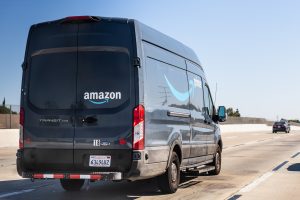
Sponsored products
Sponsored product ads appear as individual product listings displayed in the list of shopping results when shoppers enter a search. Usually, any Amazon search’s first three to five results are sponsored ads, indicated by a small “sponsored” label directly above the listing.
Sponsored brands
Sponsored brand ads are very similar to sponsored product ads, except they promote a brand as a whole instead of a single product. They are usually featured as a row at the very top of the search results page and can display up to three products and a brand logo and headline. Customers can be routed to a custom branded landing page if they click on the brand logo or to the corresponding product page if they click on one of the products.
Product displays
Product display ads are not keyword targeted like sponsored product and brand ads. Instead, they are interest-targeted, meaning they are shown to customers who have demonstrated a pattern of interest in the category to which that product belongs. This type of advertisement is a little different because it leverages a customer’s past buying habits rather than their current search terms. Product displays can appear in many places across Amazon’s website, not just in the list of search results.
Tips For Optimizing Amazon Ads
Amazon advertising can get the product in front of the customer,  but it’s still up to the ad to sell them on it. Here are a few tips for getting the most out of the ads that go up on Amazon:
but it’s still up to the ad to sell them on it. Here are a few tips for getting the most out of the ads that go up on Amazon:
Be creative with your ad copy.
One of the most significant advantages of advertising with Amazon is that it provides access to an established audience of shoppers. However, the size and reach of the platform also mean there is a lot of competition for shoppers’ attention. Advertisers can give their ad campaigns a better chance of sticking out from the crowd by injecting a little bit of wit or humor into their ad copy.
Get to the point.
Catching shoppers’ attention is essential, but convincing them to buy is the ultimate goal. Since advertisers have a limited amount of space to utilize, it’s a good idea to make your Amazon ad copy specific and informative so that shoppers get the details they need to decide with minimal effort.
Use multiple ad formats.
If you stick with just one type of Amazon advertisement, you’ll never know if another type could be working better. Sometimes, the best approach is to invest in all three main ad formats for the broadest coverage possible.
How Much Does Amazon Advertising Cost?
Amazon Advertising functions as a pay-per-click model, which means advertisers pay each time a customer clicks on one of their ads. The advertiser sets the cost per click, but the more competitive the bid, the more likely the ad is seen. This can save advertisers from paying for an ad that isn’t getting any attention.
The cost per click is the same whether the click results in a sale or not, so it’s up to the product itself to make the click price worthwhile.
An Advertising Platform for the Holiday Season
Small business owners hoping to take advantage of the upcoming holiday season to boost sales should consider investing in additional advertising channels. Whether a business is looking for a long-term advertising platform or a short-term home for a holiday ad campaign, they could likely find a solution that fits their needs with Amazon Advertising.
Join NFICA for $5 a year
NFICA has chosen MetLife, a trusted 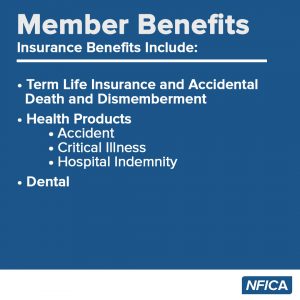 name in insurance for over 150 years, to provide competitively priced life insurance products and supplemental health insurance to independent contractors. This offer is for the members and spouse/domestic partner, and children of members of the NFICA and is not available to the general public. Learn More.
name in insurance for over 150 years, to provide competitively priced life insurance products and supplemental health insurance to independent contractors. This offer is for the members and spouse/domestic partner, and children of members of the NFICA and is not available to the general public. Learn More.
Search Engine Optimization, or SEO, is the process of organically increasing traffic to your website by improving its ranking in search engine results. Every small business owner selling a product or service should understand SEO to increase their content’s reach and engagement, given that nearly 93% of all web traffic comes from user searches.
When a user enters a query or search term into a search engine like Google or Bing, it runs the query through an algorithm that determines which web pages in the index are most relevant and displays them in order of relevance on the search results page.
The goal of SEO is to get your content as high on this list of results as possible.
How to Improve Your Content’s SEO Ranking
The actual content of a webpage is an essential SEO factor to consider. One of the core methods search engines use to determine rankings is to analyze pages for keywords that match users’ search terms.

Anticipating which keywords your potential customers are likely to use in their searches and prioritizing those words and phrases in the written content on your page will go a long way toward boosting your page’s SEO ranking. Identifying essential keywords upfront before writing allows you to approach your content with search engine visibility in mind.
Here is more to consider when talking about keywords:
Focus Keyphrase
Your focus keyphrase is the phrase you want your article to rank for in search engines. It should be a phrase that concisely and accurately sums up the topic of your content and one that people are likely to use when they search for information about that topic.
The focus keyphrase should be included as close to the beginning of your content as possible. The first paragraph is essential, and the first sentence is ideal. Including the focus keyphrase early on helps search engine algorithms quickly recognize your content’s topic, which leads to higher rankings.
Keyphrase Density
Keyphrase density is the frequency with which your keyphrase appears in your content. The keyphrase should appear regularly throughout your content and as organically as possible, but it has negative consequences for overusing it. Search engine algorithms can recognize when content has been intentionally stuffed with keywords and keyphrases and won’t rank it highly because it’s annoying for readers.

Keyphrase Synonyms
Search engines can recognize related words and concepts, which means your content can benefit from keyphrase synonyms in addition to the keyphrase itself. Using keyphrase synonyms increases the number of keywords your content ranks for. It helps maintain a good keyphrase density by breaking up the monotony of using the exact phrase repeatedly.
Long Tail Keyphrases
Long-tail keyphrases are longer and more specific than typical keywords or keyphrases. They are not as good for increasing search traffic but are great for attracting people searching for something very specific. The more specific your long-tail keywords are, the less competition you will have in the search engine rankings when someone searches that phrase. Content often has a focus keyphrase to improve the ranking for more common, general searches and several long-tail keyphrases to stand out from the competition.
Keyphrases in the Slug
A slug is the piece of a page’s URL that identifies that particular page. For example, the URL for this article about slug optimization is https://yoast.com/slug, and the slug is “slug.” Your content’s slug must include the keyphrase because the slug is one of the factors that search engines look at when ranking pages. The slug is also visible to users in the search results list, so a slug that communicates the topic of the page will help readers determine whether or not your content is relevant to them.
Titles and Headings
Search engines also analyze titles for relevant keywords the same way they analyze the content on the page. A compelling title should be concise and to the point so that someone searching for a product or solution knows immediately that your page has what they are looking for.

Since titles indicate what the content is about, the keywords that appear in them play a significant role in a search engine’s ranking algorithm. Including the focus keyphrase in the title is an excellent way to improve the odds that your content will appear high in the list of search results.
Headings do not have nearly as much impact on SEO, so you should write them with readability in mind.
Title Tags
It’s also a good idea to include keywords, or better yet, your focus keyphrase, in the title tag. The title tag is found in the page’s HTML source code, and it’s separate from the title or the main heading that appears on the page itself.
Meta Description
A meta description is a short description of a page’s content located in the HTML source code. Search engines will only display the meta description on the search results page if optimized with relevant keyphrases. The meta description does not directly impact SEO, but if readers see what they are looking for in the meta description, they are more likely to click on your content. A meta description should be concise but provide more information than the title tag—no more than about 150 characters.
Word Count
If your content is too short, search engine algorithms will have a more challenging time determining what it’s about. Three hundred words should be the minimum, but content of at least 1,000 words stands the best chance of being ranked highly. Plus, the higher your content’s word count, the more keyphrases and keyphrase synonyms you can fit.
Internal and External Links
Internal links are links from one page on your site to another page on your site. Including internal links can increase traffic to the linked content and can improve search engine rankings. 
External links can take the form of either inbound links or outbound links. Inbound links are links from other sites to a page on your site, whereas outbound links are links from your site to a page on another site.
If your page receives a lot of inbound links from other sites, its search engine ranking will improve. Outbound links won’t necessarily do anything for your page’s SEO, but it’s good practice to link to other applicable content. If no one adds outbound links, then no one gets to benefit from inbound links. Of course, it would be counterproductive to link to a direct competitor’s content.
SEO Done Right
For a great example of effective SEO, take a look at Nike’s website.
 At the top of the page, they have their products listed in categories. But, rather than directly list the names of different shoes, Nike’s lists focus on the purposes each shoe serves, like running, tennis, or basketball.
At the top of the page, they have their products listed in categories. But, rather than directly list the names of different shoes, Nike’s lists focus on the purposes each shoe serves, like running, tennis, or basketball.
If someone wants to buy a new pair of running shoes, Nike’s Air Zoom Pegasus 38s might be precisely what they need. But what are the odds of someone entering “Nike Air Zoom Pegasus 38” into the search engine unless they already know what they’re looking for? By listing these shoes under the categories “men’s” and “running,” Nike has dramatically increased the odds of getting their shoes in front of the person who hasn’t yet decided what they want and searches Google for “men’s running shoes” to help them make their choice.
Even more interesting about Nike’s SEO is how they cast their net beyond just people looking for shoes. At the time of writing, the first thing that draws a visitor’s eye to Nike’s site is a colorful ad featuring Megan Thee Stallion with her name written across it. This is a clever SEO tactic that will boost Nike’s ranking by tapping into web traffic for the popular search term “Megan Thee Stallion.”
Obviously, a brand that doesn’t have a partnership with Megan Thee Stallion the way Nike does would not use this specific tactic. However, the takeaway is that identifying areas of cross-interest can allow you to expand your possible keywords and draw in web traffic from a wider audience.
Start Optimizing!
SEO can seem like a daunting topic to a self-employed content creator just starting out, but taking the time to understand and apply it is the fastest way to grow brand awareness and increase engagement. Hopefully, this simple guide can help you optimize your site to get more organic traffic and set you on your way to becoming an SEO expert.
Join NFICA for $5 a year

OUR HOSPITAL INDEMNITY INCLUDES PHYSICIAN VISITS, PRESCRIPTIONS, AND HEALTH SCREENINGS
People get sick and have accidents. It happens all of the time, sometimes requiring a trip to the hospital. Imagine your child getting hurt on the school playground or your spouse undergoing an emergency appendectomy. Even with medical coverage, additional expenses can add up quickly. In an emergency, there’s little time to worry about hospital bills. Having the financial support you may need when the time comes means less worry for you and your family. LEARN MORE ABOUT OUR HOSPITAL INDEMNITY SUPPLEMENTAL COVERAGE.
In the ever-evolving Instagram world, polls have remained one of the most under-hyped features. Although not as buzz-worthy as reels, this feature deserves a spotlight moment. In today’s blog post, we will dive into ALL you need to know about polls and how they can help you move the needle on your entrepreneurial journey!
What are Instagram Polls?
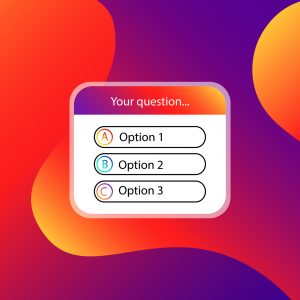 Instagram polls is a story feature that allows you to engage with your audience through embedding an interactive sticker icon into your stories. Doing this will enable you to ask questions and receive real-time feedback from your followers. The feature is straightforward to use and should not go unutilized if you are trying to create a unique connection with your followers and potential customers. To locate this feature, head to your stories, take a picture, swipe up, and select “poll.” It’s as simple as that!
Instagram polls is a story feature that allows you to engage with your audience through embedding an interactive sticker icon into your stories. Doing this will enable you to ask questions and receive real-time feedback from your followers. The feature is straightforward to use and should not go unutilized if you are trying to create a unique connection with your followers and potential customers. To locate this feature, head to your stories, take a picture, swipe up, and select “poll.” It’s as simple as that!
4 Benefits of Using Instagram Polls
Increased Engagement. As you may or may not know, the Instagram algorithm favors engagement. The more your content is interacted with, the more Instagram will push it! As a business owner, this is huge! By adding a poll sticker, you create an opportunity to increase engagement and therefore have your content seen by more people.
Build Connection. Utilizing the poll feature allows you to begin creating a unique, more intimate connection with your followers. Through this, you can learn about their preferences, personalities, and quirks. Doing this will enable you to understand the market better, making it easier to convert and generate money in your business.
Helps identify potential clients. When a person takes time to vote on your poll, this signifies a level of interest and engagement. Take note of who votes and focus on building a connection with those people. Doing this increases the chances of converting a follower into a customer!
Product development. Asking your audience questions about your products or services is a powerful way to create an irresistible offer. Doing this will provide you with insight as it relates to what your audience wants most!
Poll Examples
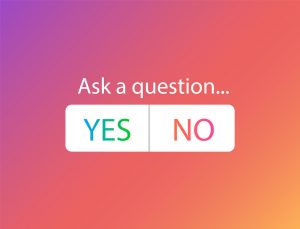 Depending on the type of business you run, you can use polls to meet different objectives. Here are five examples of engaging polls you can use with your audience:
Depending on the type of business you run, you can use polls to meet different objectives. Here are five examples of engaging polls you can use with your audience:
- “This or that” — Which do you prefer? A. Product #1 or B. Product #2
- “What’s your favorite” — What’s your favorite service I offer? A. Freelance Photography or B. My online course on editing pictures
- Question polls — How was your day today? A. Great! or B. It could have been better
- Feedback polls — What do you want to see more of on my page? A. Stories or B. Reels
- “Get to know me” — How old am I? A. 43 or B. 37
Take time to implement all different types of polls into your story content and see how your audience responds. Check out these great examples of polling ads. You will be surprised at the influx of responses you get! The truth is, people LOVE stating their opinion.
Overall, Instagram polls are a powerful way to get a pulse on your audience, their buying decisions, and what type of content they enjoy seeing from you.
Join NFICA for $5 a year
METLIFE TAKEALONG DENTAL℠ INSURANCE
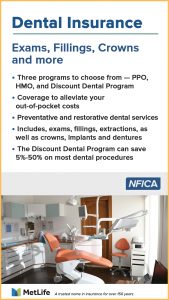 You may not enjoy it, or you may think it’s a luxury, but a healthy mouth can have an impact on your overall health. Individual dental insurance is a smart option to help protect your smile and your savings.
You may not enjoy it, or you may think it’s a luxury, but a healthy mouth can have an impact on your overall health. Individual dental insurance is a smart option to help protect your smile and your savings.
For more detailed information, enter your zip to see the programs available to you.
Instagram story features have popped off over the last few years. As a small business owner selling goods or services, Instagram stories are where it’s at. Between stickers, music, and quickly generated captioning, Instagram has made it easy for you to create a masterpiece out of your story. Taking the time to make an aesthetically pleasing story can increase your brand awareness, convey your message, and portray your vibe on a whole new level. Although this seems rather obvious, very few people seem to spend time optimizing their stories in this way. Today, we will be diving into all you need to know about the “stickers” feature on stories.
What Are Stickers?
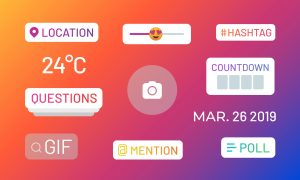 Instagram story stickers allow you to add visual interest, additional information and connect with your audience through your photos and videos in a way that appears fun and pleasing to the eye. Stickers options include:
Instagram story stickers allow you to add visual interest, additional information and connect with your audience through your photos and videos in a way that appears fun and pleasing to the eye. Stickers options include:
- location
- mention
- hashtag
- caption
- question
- gif
- quiz
- donation
- countdown
- current time
- weather
While there are nearly a dozen stickers, today, we will focus on the top 3 stickers you can use to raise brand awareness.
3 Stickers All Business Owners Should Be Using
- Question Sticker – The question sticker allows you to engage with your customers and
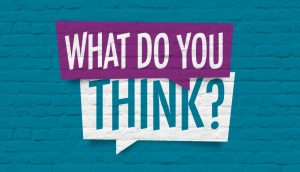 opens the floor to ask them questions about their wants and needs, your products and services, and anything in between. What’s better than 1:1 communication with your ideal customers? Nothing! An example of a question you could ask for your business would be: “For my next launch, what is something you desperately want to see?”
opens the floor to ask them questions about their wants and needs, your products and services, and anything in between. What’s better than 1:1 communication with your ideal customers? Nothing! An example of a question you could ask for your business would be: “For my next launch, what is something you desperately want to see?” - Poll Sticker – Poll stickers allow you to poll your audience and receive real-time feedback. Not only does using these stickers provide you with valuable feedback from your ideal customers, but it also boosts your engagement. Consider that a win, win! Some examples of poll ideas are “this or that,” “which would you prefer,” and “get to know me.”
- Countdown Sticker – Countdown stickers allow you to share a countdown to an important date with your audience. Consider this sticker your best friend when it comes to new launches and exciting announcements! Not only does it let your audience know special dates, but it also creates hype! For example, in the week leading up to a special launch, you can be sharing this countdown to raise awareness and generate excitement among your audience.
Tips For Using Instagram Story Stickers
- Don’t overuse them. While stickers are tremendous and can pack a punch, don’t use them just to use them. Use stickers only when it makes sense, adds visual appeal, or serves a specific purpose to reach an end goal! When stickers are overused, they can look messy.
- Aesthetics matter. When creating your story, spend the extra time methodically placing your stickers. Having a story that’s pleasing to the eye can go a long way in catching the viewer’s attention and conveying your message on a deeper level. Un-aesthetically pleasing stories can feel overwhelming and ultimately turn viewers away.
- Change it up! While brand consistency is essential, don’t be afraid to change up your daily stories through stickers. While Instagram stories can help propel your business, they should also be entertaining for the viewer. Make the viewing experience fun by adding music, gifs, and polls! Changing things up allows you to keep your audience engaged long term.
Join NFICA for $5 a year
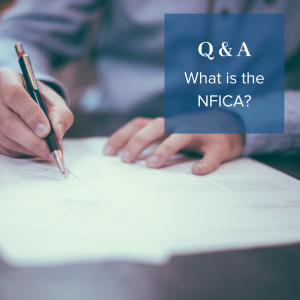 The NFICA provides small business owners, freelancers, and direct sellers with industry-leading benefits. From insurance benefits to non-insurance lifestyle and business products, we’ve got you covered.
The NFICA provides small business owners, freelancers, and direct sellers with industry-leading benefits. From insurance benefits to non-insurance lifestyle and business products, we’ve got you covered.
To learn more about our products and enjoy the benefits of belonging, visit our website.
As your small business progresses, it won’t be long until you likely consider an online presence. Marketing and selling your products online can reach a wider audience than a brick-and-mortar and generate more traffic to your product.
But choosing which avenue to explore when selling your products can be tricky. There are two notable platforms to consider that can offer value, elevate your business, and are great for beginners: Amazon and Shopify.
Amazon Vs. Shopify – What’s the Difference?
Simply put, Amazon can be described as a complete marketplace that allows you the option for Amazon to manage your inventory and handle your distribution. On the other hand, Shopify is a platform that requires you to build and design your online shop from scratch. Amazon can put you directly in front of customers, while Shopify has the tools to create an eye-catching website that reflects your brand identity. Both of these options are great for small business owners, and it comes down to your personal preference, budget, and time.
It might be difficult or intimidating to choose one or the other since both platforms bring value to your small business.
Pros And Cons Of Each
 When deciding between a platform that requires you to drive your own traffic and a marketplace that practically has built-in traffic, there are several factors to consider. The platform you choose to utilize depends on how established your business is and what the budget allows.
When deciding between a platform that requires you to drive your own traffic and a marketplace that practically has built-in traffic, there are several factors to consider. The platform you choose to utilize depends on how established your business is and what the budget allows.
Shopify Pros:
- Easy-to-use and flexible design that website builders at any stage can navigate
- An affordable way to build an online presence for your store
- Your store entirely belongs to you, and you won’t have to worry about paying a percentage of your sales to Shopify, which is not the case for Amazon.
- Helps you solidify your brand identity
Shopify Cons:
- You are in control of meeting your marketing needs which can increase your overall budget costs
- May be subject to additional transactional fees
- You won’t have Amazon’s reputation as leverage to launch your business
Amazon Pros:
- A great place to start drawing attention to your business since you won’t be required to build the platform from scratch
- Offers a “Fulfillment by Amazon” (FBA) feature where Amazon will take the reigns on all of your shipping, processing, and distribution needs
- Setup is easy, and you can begin selling your products immediately.
- The FBA option has a built-in customer service component that handles any shipping and handling issues.
Amazon Cons:
- Extracts a fee of up to 40% for each purchase
- Highly saturated, and the competition is much stronger
- No control over your page and unable to customize your Amazon presence which could affect your brand identity.
- Fees associated with partnering with Amazon could take a large chunk of money from your budget.
Amazon Vs. Shopify — How are They Priced?
 Regardless of the platform you choose, you will be faced with fees from each. And since the name of the game with small businesses is making money, you’ll want to ensure the platform you choose isn’t eating up hundreds of dollars of your budget, especially if you are only selling a handful of items each month. Luckily, both options offer a few price points for you to choose from.
Regardless of the platform you choose, you will be faced with fees from each. And since the name of the game with small businesses is making money, you’ll want to ensure the platform you choose isn’t eating up hundreds of dollars of your budget, especially if you are only selling a handful of items each month. Luckily, both options offer a few price points for you to choose from.
Amazon has two selling plans:
The professional selling plan is $39.99 a month plus any extra selling fees, which could vary depending on your product.
The individual selling plan does not come with a monthly fee, but rather, you pay $.99 per item sold. This plan also includes additional selling fees that will vary by product.
The individual selling plan is excellent for those who plan to sell less than 40 or so items per month. It’s perfect for side hustlers and those looking to make a little extra cash. Otherwise, the professional selling plan is likely a better option for those looking to launch their small business and make it their full-time job since it comes with more perks.
Shopify has three selling plans:
The Basic Shopify plan costs $29 a month.
The Shopify plan costs $79 a month.
The Advanced Shopify plan costs $299 a month.
With the Basic plan, you’ll have access to features such as an eCommerce website and blog, multichannel selling, abandoned cart recovery, and manual order creation. When you upgrade to the Advanced plan, you’ll have all of those features plus 15 staff accounts, third-party calculated shipping rates, lower credit card rates, and more.
Join The NFICA Today!
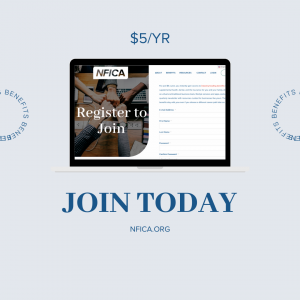 The NFICA provides entrepreneurs just like you with leading benefits at competitive prices!
The NFICA provides entrepreneurs just like you with leading benefits at competitive prices!
Join the NFICA for only $5/yr.
You’ll have access to:
🔷 HealthiestYou by Teladoc. Over 8,000 board-certified, licensed doctors who can diagnose, treat and prescribe medicine via phone or video chat.
🔷 Hospital Indemnity. A Limited Medical plan that includes physician visits, prescriptions, health screenings, and more. A good option if you can’t afford major medical insurance.
🔷 Discounts on lifestyle apps and services.⠀
⠀⠀⠀⠀
Facebook polls are a great way to increase engagement with your brand and inform business decisions. However, many small business owners, independent contractors, and freelancers overlook or underestimate this feature.
If you’ve never used Facebook polls, or if you’re wondering where on Earth the option to create a poll went, you are not alone. Facebook changed its polling system, leading some people to believe that the polling feature was removed entirely. Luckily, you can still create a poll in a Facebook Group or on your Facebook Story, and there is even a workaround that will let you continue to post polls from your business page.
Why You Should Be Using Facebook Polls
Create Engagement
Polls are an excellent way to give customers a voice and show them that you care about what they have to say. Businesses used to go to great lengths to create this type of interaction with survey campaigns over the phone or on the street with a clipboard and pen. Now, you can achieve the same results with just a few clicks.
Gather Feedback
 Facebook polls also provide valuable insight into which aspects of your business make customers happy and which aren’t being received well and need to be changed. You might even discover a need for a product, service, or feature you hadn’t considered yet.
Facebook polls also provide valuable insight into which aspects of your business make customers happy and which aren’t being received well and need to be changed. You might even discover a need for a product, service, or feature you hadn’t considered yet.
How to Create a Facebook Poll
Group Polls
It’s still easy to create a poll in a Facebook group, as long as you have admin privileges for that group. To create a group poll, log in to Facebook and navigate to the group page you want to poll, then follow these steps:
- Click on the “create public post” field. The post creation window will appear.
- Click on the three horizontal dots in the lower right corner of the post creation window. A list of options will appear.
- Click the poll button in the list of options. A poll creation window will appear.
- Set up your poll and click “post.”
- If you want to include more than the default three answer choices, you can add more from the options menu that you can access by clicking on the three horizontal dots in the lower right corner of the poll creation window.
Business Page Polls
Posting a poll on a business page is a little trickier but can still be accomplished. From the business page on which you want the poll to appear, follow these steps:
- Click on “publishing tools” in the sidebar on the left side of the page. A list of your published posts will appear.
- Click the “create post” button in the top left corner of the “published posts” page. A post-creation window will appear.
- If you don’t see the option to create a poll, click on the settings gear icon in the lower-left corner of the post creation window to access additional settings.
- Choose “classic post creation tool” from the additional settings. The old version of the post creation window will appear.
- Click on the three horizontal dots on the right side of the old post-creation window. A list of options will appear.
- Click the poll button in the list of options. A poll creation window will appear.
- Set up your poll and click “share now.”
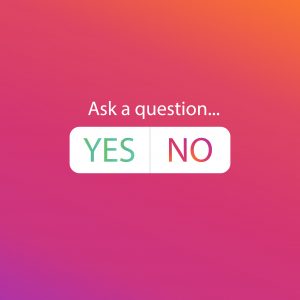 Creating a poll from your business page offers some additional options that aren’t available when creating a group poll, like the option to schedule a poll to be automatically posted at a later time. Unfortunately, business polls are limited to just two answer choices.
Creating a poll from your business page offers some additional options that aren’t available when creating a group poll, like the option to schedule a poll to be automatically posted at a later time. Unfortunately, business polls are limited to just two answer choices.
Personal Page Polls
You can also post a poll on your personal Facebook page using your Facebook story. The option can be found within the list of stickers accessible at the top right of your screen when creating a new story post. However, story polls have minimal customization options, and it might be best to post polls from a business page instead.
Facebook polls may be harder to access than before, but the feature is still available. Now that you know where to look, you can start using Facebook polls to interact with customers and expand your business’s reach.
Join NFICA for $5 a year
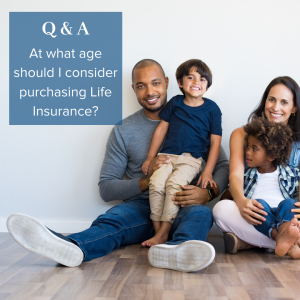 If someone else is depending on your income, which usually means a spouse/mate or children you need life insurance to:
If someone else is depending on your income, which usually means a spouse/mate or children you need life insurance to:
✅ Replace lost income (mortgage/rent, living expenses, college loans, etc.)
✅ Help pay education-related expenses for your children (speech therapy, private education, college)
✅ Cover final expenses like funeral and burial costs
What people don’t consider but should is that your age along with your health is going to affect the cost of insurance, which means the sooner the better. Buying young protects against uninsurablity at a later age due to the onset of a medical condition. Learn More
Developing an effective content strategy is one of the keys to success for any small business trying to find a foothold in the world of digital commerce. Traditionally, advertisements have been companies’ primary method of attracting customers, but with the rising cost of securing an ad on television, nowadays, the majority of businesses are opting to invest in content marketing instead.
 An effective content marketing approach is especially beneficial for small businesses because it allows them to compete with well-established companies with more resources to devote to large-scale ad campaigns. By generating organic brand awareness with valuable content like blog posts, podcasts, or social media, a small business can connect with consumers for a fraction of the cost without inundating them with traditional ads that some might consider annoying or impersonal.
An effective content marketing approach is especially beneficial for small businesses because it allows them to compete with well-established companies with more resources to devote to large-scale ad campaigns. By generating organic brand awareness with valuable content like blog posts, podcasts, or social media, a small business can connect with consumers for a fraction of the cost without inundating them with traditional ads that some might consider annoying or impersonal.
Here are some tips to help you kick-start your business’s content strategy:
Make a Goal
Before you start creating content, you need to decide why you are creating it in the first place. Good content can be about anything at all, but for your content to be valuable, it needs to move your business toward a goal. Think about what you want your content to achieve and write it down in specific, quantifiable terms. Maybe you want to increase traffic to your website by 20 percent or gain 1,000 new social media followers, for example. Define how, exactly, you want your content to impact your business and plan your content strategy with that end in mind.
Don’t Sell a Product — Solve a Problem
Content marketing is more about driving sales by connecting with your audience to  increase your brand’s visibility and less about hard-selling your product. Publishing relatable, informative content about solving a problem that your product addresses (with a link to your product included) is often more effective than directly plugging your product. You will naturally attract the people who are already looking for the solution you provide, and you will frame your business as one that is personally invested in helping the customer rather than one that just wants their money.
increase your brand’s visibility and less about hard-selling your product. Publishing relatable, informative content about solving a problem that your product addresses (with a link to your product included) is often more effective than directly plugging your product. You will naturally attract the people who are already looking for the solution you provide, and you will frame your business as one that is personally invested in helping the customer rather than one that just wants their money.
Informative content will also show your customers that your business is knowledgeable about the problem it seeks to solve, which builds your brand’s authority. Good content marketing shouldn’t just try to sell the product; it should seek to develop a relationship between your brand and the customer.
Know Your Audience
It’s the oldest advice in the book, but that’s because it’s too important not to mention. Once you’ve determined the goal you want your content to achieve for your business, and what problem you want it to solve for consumers, you need to consider who you want it to reach. The answer to this question will inform your approach to creating content that meets your goals—primarily, it will be essential to determine your content’s voice and medium.
 Think about which demographics stand to benefit most from your product and cater the way you write your content and the form in which you publish it directly to that group. If you want to sell t-shirts to a teenage demographic, a social media post written in a casual tone of voice might be most effective, whereas selling insurance to a middle-aged demographic might benefit less from that approach. Different content channels will reach different audiences, and the only way to make sure you are investing in the right ones is to be confident about who you are trying to reach with your message.
Think about which demographics stand to benefit most from your product and cater the way you write your content and the form in which you publish it directly to that group. If you want to sell t-shirts to a teenage demographic, a social media post written in a casual tone of voice might be most effective, whereas selling insurance to a middle-aged demographic might benefit less from that approach. Different content channels will reach different audiences, and the only way to make sure you are investing in the right ones is to be confident about who you are trying to reach with your message.
Build a Schedule
It’s important to publish content consistently so that you hold your audience’s interest. People have short attention spans on the internet, so grab it by regularly delivering new content that keeps your brand fresh in their minds once you have their attention.
Strategically timing your content publication can also have a substantial effect on your brand’s visibility. It’s common for businesses to plan their content marketing around major holidays, but if some specific holidays or  dates are significant to your target audience in particular, take advantage of those by building your content publishing calendar around them. If demand for your product fluctuates based on the time of year, re-strategize your content throughout the year to reflect those changes.
dates are significant to your target audience in particular, take advantage of those by building your content publishing calendar around them. If demand for your product fluctuates based on the time of year, re-strategize your content throughout the year to reflect those changes.
Whatever your publishing schedule looks like, building one and sticking to it will help you stay organized and guarantee that your content appears consistently to consumers.
Publish Quality Content
Keep in mind that your content marketing is the first impression many customers will have of your brand, and as we all know, good first impressions are essential. It’s not just about how good your product is or how clever your ideas are. The quality of your content represents your brand just as much as the quality of your product and has a significant impact on how much consumers trust your business. Content that is boring or poorly written will leave your audience with a negative impression, while clever or engaging content will have them coming back for more.
Hopefully, these tips will give you the inspiration you need to begin developing an effective content strategy for your business. If you already have a plan in place, take some time to assess and refine it. Online marketing content is no longer just an “extra” for your business — it’s one of the most effective marketing tools you have at your disposal. Taking the time to plan your content strategy intelligently will give your business the boost it needs to get off the ground and get people talking.
Join NFICA for $5 a year
 If someone else is depending on your income, which usually means a spouse/mate or children you need life insurance to:
If someone else is depending on your income, which usually means a spouse/mate or children you need life insurance to:
☑️ Replace lost income (mortgage/rent, living expenses, college loans, etc.)
☑️ Help pay education-related expenses for your children (speech therapy, private education, college)
☑️ Cover final expenses like funeral and burial costs
What people don’t consider but should is that your age along with your health is going to affect the cost of insurance, which means the sooner the better. Buying young protects against uninsurablity at a later age due to the onset of a medical condition. Learn More
For the past eighteen years, Linkedin has been providing business professionals with a way to network, connect, post jobs, and seek employment. In recent months, LinkedIn announced some updates that are game-changing for freelancers and self-employed service providers. Before we go any further, let’s discuss the importance and power of LinkedIn as an entrepreneur in 2021.
- Linkedin has over 756 million users making it extremely easy to connect with ideal clients, employees, and business partners.
- Lead conversion rates on Linkedin are 3x higher than other popular ad platforms, including Google Ads.
- LinkedIn generated the highest visitor-to-lead conversion rate, almost three times higher than Twitter and Facebook.
While over the past year, many new features have been added to Linkedin, there are two that stand out as valuable if you are a freelancer or self-employed:
Video Cover Story
The new video cover story feature lets you draw visitors in with a personalized 20-second video clip. Not only is this a great way to share your services, but it also allows visitors to see your personality and showcase your communication skills. Taking advantage of this feature will allow you to set yourself apart from the competition. Before making your video, you should know that:
- You MUST make the video on your mobile device.
- For best results, it is recommended that you create this video in portrait style.
- Click on the “+” next to your profile picture to get started.
- An orange-colored ring will appear around your profile picture to let people know you’ve made a recording, and a three-second preview of your video will autoplay silently in the photo frame.

Danial Roth, VP at LinkedIn, uses a Video Cover Story to show us his personality.
Service Pages
Linkedin Service Pages act as a landing page for you to showcase your services on your personal profile. The best part is, any Linkedin member can create a service page for free, and clients can message you no matter your connection degree as long as your profile visibility is set to “public.” With that in mind, taking advantage of this new feature allows you to become more discoverable from Linkedin or other search sites, like Google. 
Great News! LinkedIn also has plans to feature ratings and reviews on these Service Pages soon, so stay tuned for future updates!
The Service Pages are found under the “Open To” button under your profile picture. Some accounts may not have initial access to this feature. You can gain access by requesting to Join the Service Provider Group.
To learn how to set up a Service Page, click here.
Here is a great example to see the Service Provider Page in action.
Join NFICA for $5 a year
 The NFICA provides small business owners, freelancers, and direct sellers with industry-leading benefits. From insurance benefits to non-insurance lifestyle and business products, we’ve got you covered.
The NFICA provides small business owners, freelancers, and direct sellers with industry-leading benefits. From insurance benefits to non-insurance lifestyle and business products, we’ve got you covered.
To learn more about our products and enjoy the benefits of belonging, visit our website.
If you are an entrepreneur, freelancer, direct seller, or small business owner, you are likely to utilize social media to advertise your products and services and create an online presence. Social media allows companies of all sizes to engage with their customers personally, build brand loyalty and awareness, and update their buyers on new developments.
Why Timing Important?
Learning the best times to post your content gives you the maximum potential for engagement, elevating your brand. When it comes to social media marketing, anything that generates engagement (such as likes, follows, comments, and shares) is fuel for your business. The more that followers engage with your content, the more likely you will reach a wider audience. 
Research has shown that there are specific times of the day where users are most likely to be on their phones scrolling through social media. This is where the “best time to post” narrative comes into play. Every industry is different, and posting at the best time depends on your location, brand identity, and target audience, among other things.
The Best Times To Post
There isn’t a “one size fits all” approach when posting on different platforms since many factors are considered. However, below is a”cheat sheet” of sorts to get you started while you’re learning how to use your analytics tools for specific posting data.
Instagram — Tuesday 11 am-2 pm CST; Monday-Friday 11 am CST (Sprout Social 2021)
Facebook — Tuesday, Wednesday, and Friday 9 am-1 pm CST (Sprout Social 2021)
Youtube — Monday, Tuesday, and Wednesday 1 pm-3 pm CST; Thursday and Friday 11 am-2 pm CST; Saturday and Sunday 8 am-10 am CST (Entrepreneur 2021)
LinkedIn — Tuesday thru Thursday 9 am-noon CST (Sprout Social 2021). Adversely, the worst times to post are on weekends and outside of typical business hours.
Use Analytics To Your Advantage
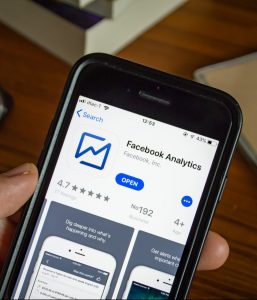 Each platform has its own set of analytics, with valuable information that can help you determine the best times to post your content. For instance, Facebook’s Page Insights will show you when your Facebook fans are online.
Each platform has its own set of analytics, with valuable information that can help you determine the best times to post your content. For instance, Facebook’s Page Insights will show you when your Facebook fans are online.
For Instagram, you’ll find this information under your Instagram Insights. Just make sure that your profile is switched to business.
Your LinkedIn Update metrics offer insights on the best days of the week to get the highest engagement.
Youtube analytics operates similarly and allows you to track just about anything from their Youtube Studio dashboard. Advanced mode allows you to see how long your users have watched your videos, how many views they’ve gotten, your subscriber count, top videos, and much more.
Utilize Scheduling Software
Social media management software should be considered a part of your marketing strategy. Management software lets you create and schedule posts across multiple platforms in one place, saving you both time and money.
But the best advantage to scheduling software is that most of these programs have a built-in “time optimization” tool. Meaning, they analyze the content you are posting and who your target audience is and calculate the best time to post. This takes out all of the legwork for you, leaving you only to focus on perfecting your content.
 At NFICA we offer Benefits that you need as an independent contractor. These include Life Insurance at rates not available to the general public, discounts on business tools, competitive rates on Telemedicine, and health products like Critical Illness, Hospital Indemnity, and Accident Insurance! See what we have to offer.
At NFICA we offer Benefits that you need as an independent contractor. These include Life Insurance at rates not available to the general public, discounts on business tools, competitive rates on Telemedicine, and health products like Critical Illness, Hospital Indemnity, and Accident Insurance! See what we have to offer.